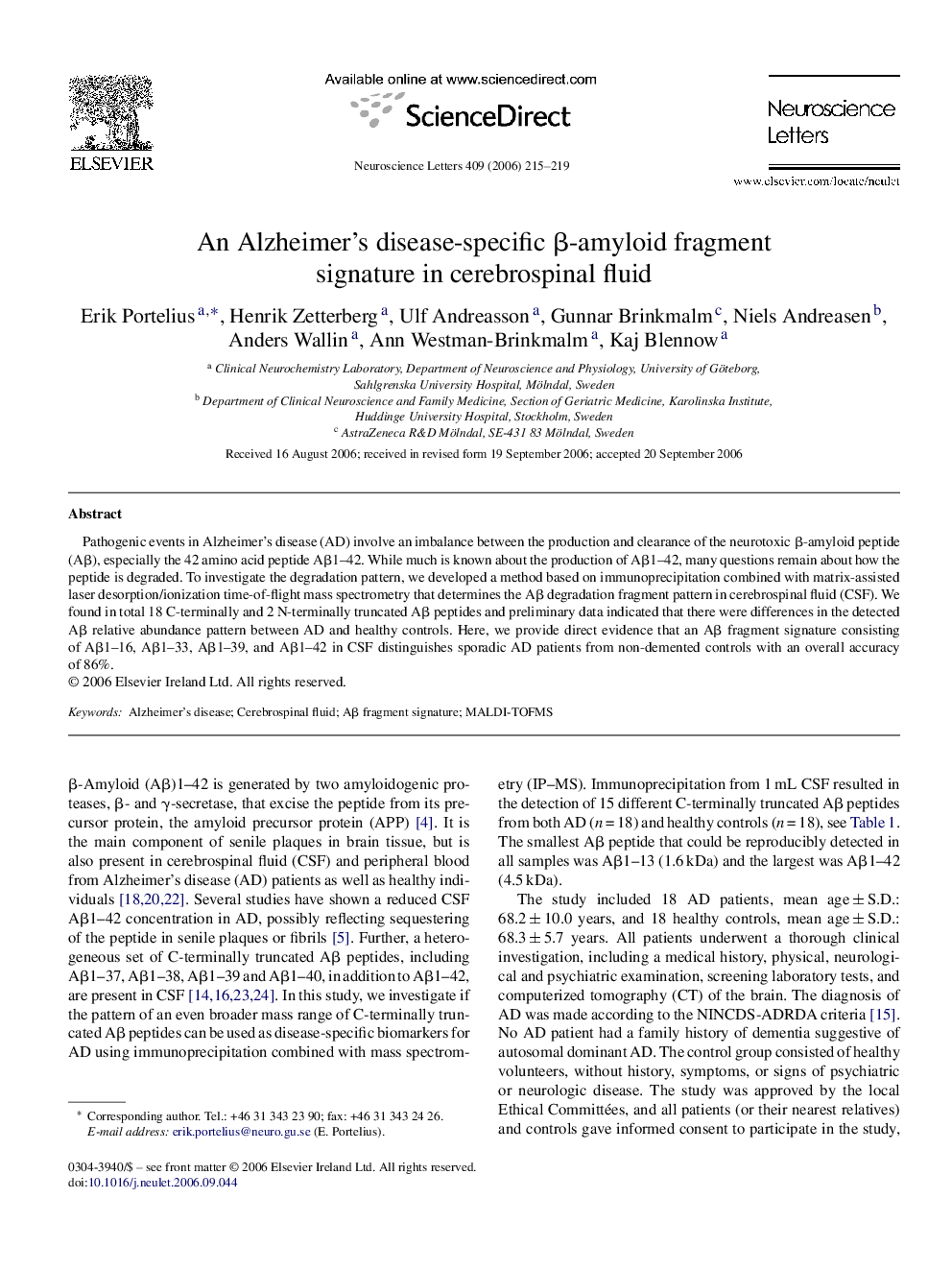| Article ID | Journal | Published Year | Pages | File Type |
|---|---|---|---|---|
| 4349978 | Neuroscience Letters | 2006 | 5 Pages |
Pathogenic events in Alzheimer's disease (AD) involve an imbalance between the production and clearance of the neurotoxic β-amyloid peptide (Aβ), especially the 42 amino acid peptide Aβ1–42. While much is known about the production of Aβ1–42, many questions remain about how the peptide is degraded. To investigate the degradation pattern, we developed a method based on immunoprecipitation combined with matrix-assisted laser desorption/ionization time-of-flight mass spectrometry that determines the Aβ degradation fragment pattern in cerebrospinal fluid (CSF). We found in total 18 C-terminally and 2 N-terminally truncated Aβ peptides and preliminary data indicated that there were differences in the detected Aβ relative abundance pattern between AD and healthy controls. Here, we provide direct evidence that an Aβ fragment signature consisting of Aβ1–16, Aβ1–33, Aβ1–39, and Aβ1–42 in CSF distinguishes sporadic AD patients from non-demented controls with an overall accuracy of 86%.
